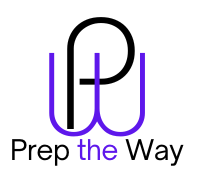The Art of Finding and Purifying Water in a Survival Situation
March 9, 2024 | by preptheway.com

When it comes to survival situations, there is one essential element that trumps all others: water. Without it, our bodies cannot function properly, and dehydration can quickly lead to a host of problems. In general, a person can survive for about three days without water. Therefore in a survival scenario, finding and purifying water must become a top priority. In this article, we will explore some practical tips and techniques for locating and purifying water in the wild.
1. Finding Water Sources
In the wilderness, water can be found in various places, but it may not always be readily visible. Here are some clues to help you locate water:
- Follow animal tracks: Animals need water too, so their tracks can lead you to a nearby water source.
- Look for vegetation: Lush greenery often indicates the presence of water nearby.
- Listen for sounds: The sound of running water or frogs croaking can guide you to a water source.
- Observe the landscape: Low-lying areas, depressions, or valleys are more likely to have water.
Remember, water can also be found in unexpected places such as tree crotches, rock crevices, or even inside plants like cacti. Be resourceful and keep an open mind.
2. Collecting Water
Once you’ve located a water source, the next step is to collect it. Here are a few methods to consider:
- Use a container: If you have a water bottle or any other waterproof container, use it to collect water directly from the source.
- Make a solar still: Dig a hole in the ground, place a container in the center, cover the hole with plastic, and secure the edges with rocks. As the sun heats the ground, water vapor will condense on the plastic and collect in the container.
- Create a transpiration bag: Tie a plastic bag around a leafy branch, ensuring a tight seal. The moisture from the leaves will evaporate, condense on the inside of the bag, and collect as water.
Remember to filter out any debris or sediment from the collected water before consuming it. You can use a piece of cloth, a bandana, or even a coffee filter to strain the water.
3. Purifying Water
Even if the water appears clear, it may still be contaminated with harmful bacteria, viruses, or parasites. Here are some methods for purifying water:
- Boiling: Boiling water for at least one minute will kill most microorganisms. However, this method requires a heat source and may not be practical in all situations.
- Chemical disinfection: Using water purification tablets or liquid chlorine bleach can effectively kill most pathogens. Follow the instructions carefully and let the water sit for the recommended contact time.
- Water filters: Portable water filters with built-in purification systems can remove bacteria, protozoa, and some viruses. They are lightweight and easy to use, making them a great option for survival situations.
It’s important to note that these methods may not remove certain chemicals or heavy metals from the water. In such cases, it’s best to prioritize hydration over purity, but continue seeking alternative water sources if possible.
4. Conserving Water
In a survival situation, water is a precious resource that should be conserved. Here are a few tips to help you make the most of the water you have:
- Drink small sips: Avoid gulping down water to prevent excessive urination and dehydration.
- Avoid excessive sun exposure: Minimize sweating and water loss by seeking shade during the hottest parts of the day.
- Use water sparingly: Only use water for essential tasks like drinking, cooking, and hygiene.
By practicing water conservation, you can stretch your limited water supply and increase your chances of survival.
Conclusion
When it comes to survival, finding and purifying water is a crucial skill. By knowing how to locate water sources, collect water, and purify it, you can ensure your hydration needs are met even in the most challenging circumstances. Remember to stay calm, and resourceful, and prioritize your water needs above all else. Water is life, and in a survival situation, it becomes your most valuable asset.
